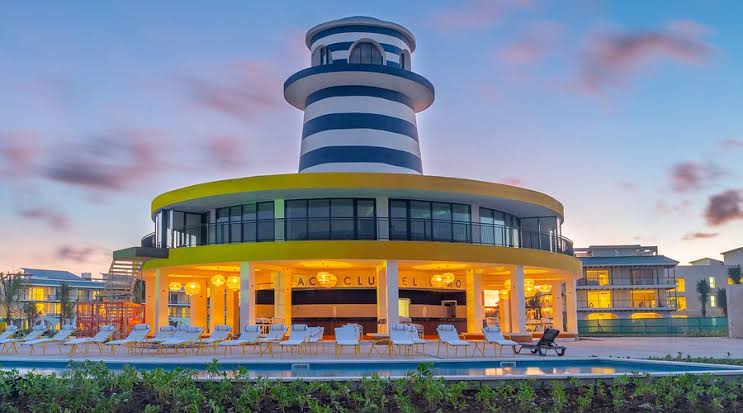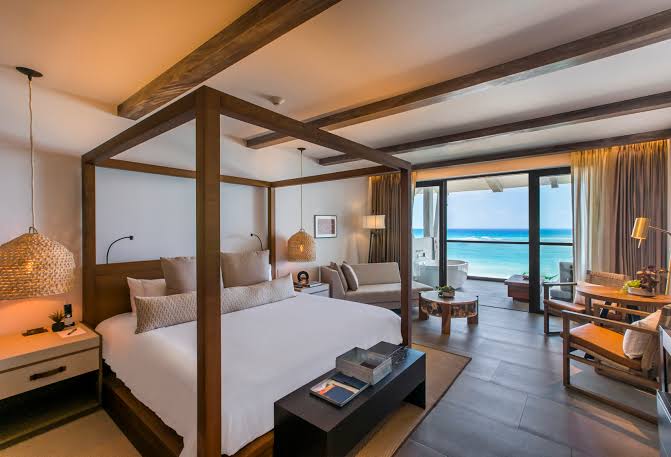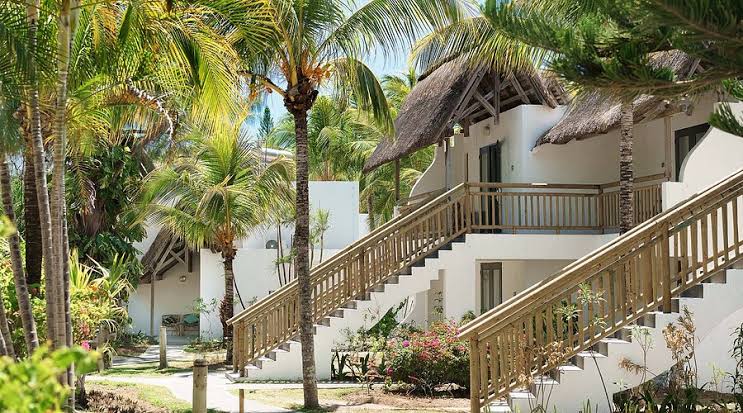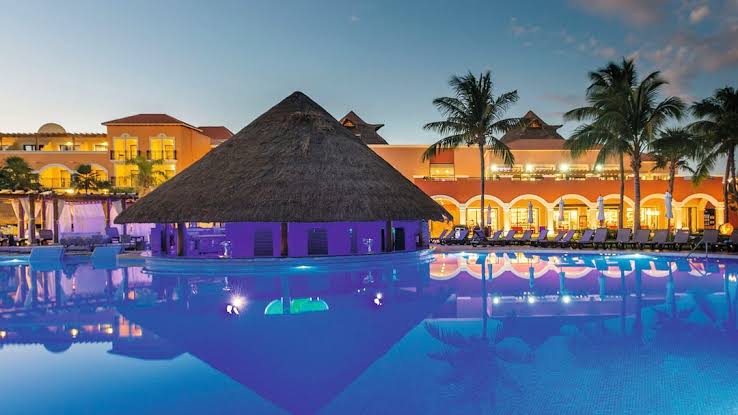Ocean El Faro: The Final Voyage of a Legendary Service
Ocean El Faro: The Final Voyage of a Legendary Service
1. Inauguration of a Proud Legacy
On July 12, 1985, the MV Ocean El Faro launched from the docks of Wilmington, North Carolina, to much fanfare. For decades, it would be the crown jewel of the El Faro Line—an ocean freighter known for its mix of commercial cargo and passenger comfort. Though officially classed as a roll-on/roll-off container ship, in practice it offered the kind of warmth and community rarely found on container vessels.
At 790 feet long and equipped with some of the most advanced navigation and safety gear of its era, El Faro was more than just steel and engines: she was a living, breathing microcosm of maritime life. Aboard, a rotating crew of 30–40 sailors called her home month in, month out. They crossed the Atlantic, Caribbean, and South American coasts, forging tight bonds through shared watches, stormy nights, and tales told under starlight.
2. Characters of the Bridge and Berth
Captain Helena Mercado
By 2018, El Faro’s bridge was commanded by Captain Helena Mercado, a seasoned veteran with more than 25 years at sea. A daughter of Puerto Rican dockworkers, Helena embodied both steely discipline and empathetic leadership. She earned her stripes on container ships and cruise liners alike before accepting El Faro—a vessel with unique demands and a close-knit atmosphere.
Helena’s calm under pressure defined the ship’s tenor. Junior officers admired her knack for navigating tight straits; crew members respected her insistence on deck safety and fairness in roster assignments.
Chief Engineer
Deep below deck, oversaw the engine room’s labyrinthine steel, valves, and turbines. A native of Vigo, Spain, Marcos was one of the few engineers who loved tinkering mid-voyage: retrofitting the galley’s stoves, recalibrating the rudder hydraulics, and often joking that he’d “fix the moon’s orbit if someone supplied the wrench.”
Marcos was the ship’s heartbeat. When he spoke, even the turbines seemed to hum along.
Communications
Stationed in the radio shack, Jasmine Liu—known by her radio handle “Jazz”—managed long-range communications, weather updates, and emergency signals. The daughter of Canadian-Chinese immigrants, she spoke four languages and could juggle Morse code with satellite uplinks on her lunch break.
Jazz was the voice of El Faro, bridging the ship with the world—and often calming families ashore when routes were delayed or storms brewed.
Deckhand Carlos “Charlie” Mendes & Cook Agatha Silva
The real soul of the ship lived among those who kept daily life running. Carlos Mendes, a Brazilian deckhand with a penchant for samba drumming, ensured cargo lashings and deck safety. Below, Agatha Silva, a Puerto Rican-born cook, kept the crew’s spirits high with her heartwarming stews, empanadas, and pastries—many accompanied by whispered family lore and recipes.
Together, these characters formed the living tissue of El Faro: discipline and diligence, yet grounded in empathy and culture.
3. Routine That Became Ritual
The Ocean El Faro’s service followed a roughly eight-week Atlantic circuit:
- Wilmington to Halifax – collecting automotive parts and machinery.
- Halifax to Liverpool – delivering cargo and taking on manufactured goods.
- Liverpool to Charleston – via the 12-day Atlantic crossing.
- Charleston to Puerto Rico – feeding supplies to Caribbean markets.
- Return to Wilmington – completing the loop.
Each voyage included occasional stops in St. John’s (Newfoundland) or Vigo, depending on charter agreements. Despite its commercial nature, the crew’s culture echoed that of cruise liners: nightly card games, impromptu film nights in the mess hall, and caravans of stories traded under full moons.
Captain Mercado fostered a rare balance: operational rigor and crew well‑being. Every morning began with safety briefings, followed by daily drills—fire, abandon ship, man-overboard. Once routines were secured, Marcos’s mechanical genius and Jazz’s communications kept things smooth. Nights, though sometimes silent save for creaking steel and ocean sighs, were when the soul of El Faro emerged in shared camaraderie.
4. The Storm of September 2019
In September 2019, El Faro embarked on what would become its most fateful voyage—departing Jacksonville bound for San Juan, Puerto Rico, carrying a valuable mixture of medical supplies, aid materials, and private cargo.
Signs of Trouble
Within 48 hours, Jazz’s weather channels flagged an anomaly: Hurricane Orlando—a rare Category 4 storm—had intensified unexpectedly in the mid-Atlantic, heading southwestward. Forecast models diverged: one predicted a broad front, another suggested a tightening path right through the ship’s trajectory.
At sea, deciding to reroute was daunting. Diverting westward meant adding days and extra fuel, while staying on course risked a direct hurricane encounter. Captain Mercado convened the bridge team—and determined: El Faro would skirt the storm to the east, maintaining a cautious southerly detour.
Into the Maelstrom
Despite careful plotting, the tracks shifted. Two days later, Orlando deepened faster than satellite data could capture. The ship’s alarms blared in early dawn: “Heavy seas ahead.” Winds surged past 100 mph. Seas towered 40 feet.
Marcos raced into the engine room, fighting to maintain power. One turbine showed signs of overheating under increased load. He ordered auxiliary systems activated just as Jazz relayed grim news: satellite feeds showed Orlando now enveloping the Ocean El Faro brewing into a superstorm.
Crew in Crisis
By midday September 16, the vessel pitched violently. Carlos and other deckhands, despite harnesses and safety lines, fought to repair a fallen lifeline. Agatha lined food in foil trays—soup, rice, beans—hoping to offer comfort amid chaos. The cookhouse became an impromptu shelter where crew prayed and recited memories of land, family far away.
Captain Mercado and her officers battled to maintain heading. Each wave threatened to knock the bridge off its keel. On the radio, Jazz strained to send position and distress signals to Jacksonville and San Juan traffic control; contact was intermittent.
5. The Final Battle
At 3 PM, Orlando’s eye wall struck. Glass-level winds ripped fittings from decks. Electrical systems flickered. Marcos yelled from below deck, “We’re losing forward propulsion!” The ship shuddered; speed dropped dangerously close to stall.
On the bridge, Mercado faced the unthinkable: with limited maneuverability and seas now horrendous, continuing on course could sink the vessel. She ordered full rudder amidships and reversed engines—hoping to ride the back of a wave, leveraging the Titanic‑era trick to ride seas on the beam.
The maneuver failed. A rogue wave—once mythic, now fact—towered above. El Faro lurched. The impact cracked the hull near hold 4, instantly flooding compartments. Electrical failure ensued; lights flickered and died.
6. The Relay of Hope
In the engine room, Marcos fought mechanical fires. His team sprang into action, igniting auxiliary generators in record time. Ships’ intercom squealed back to life; the mess hall radio played a tinny emergency signal.
Jazz, despite losing satellite uplink, retrieved the emergency beacon. With trembling fingers, she activated the EPIRB (Emergency Position-Indicating Radio Beacon), beaming the ship’s approximate position to the U.S. National Data Buoy Center and Coast Guard.
“This is Ocean El Faro. Distress. Engine room flooding. Large breach. All hands prepare abandon ship.” Jazz’s voice cut through static and wind.
Back on deck, with lifeboats swinging dangerously but still intact, Charlie and two other deckhands prepared to launch. Captain Mercado gave the order. Agatha handed out PFDs and water packets, murmuring blessings with each toss.
7. Abandon Ship
As crew abandoned El Faro, waves claimed the lifeboat intended. Only two rigid-hull inflatable boats (RHIBs) were deployed; the rest of the crew piled into life-rafts. The situation was dire.
In the chaos, six crewmen—among them Jazz and Charlie—succumbed to rough seas. Three life-rafts capsized. Six hours later, helicopters and cutters from U.S. Coast Guard Sector Mayport arrived after interpreting weak beacon signals.
Rescuers found 29 crew alive: Captain Mercado, Marcos, Agatha, and 26 others, bruised, hypothermic, but alive. Eleven were missing and later presumed lost.
8. Aftermath & Investigation
NTSB Report
The National Transportation Safety Board completed an investigation in June 2020. Findings included:
- Unanticipated intensified hurricane track due to data blind spots.
- Partial structural fatigue in hull’s forward bulkhead, undetected by standard inspections.
- Hydraulic line ruptures compromised steering under extreme pitch.
Still, the decision to face Orlando’s eye was controversial but not reckless—vessel design met most safety standards in force; fatigue was a latent, “written-off-as-minor” issue.
Maritime Changes
Regulatory bodies responded swiftly:
- Strengthened hull inspection protocols, requiring ultrasonic testing in high-stress zones.
- Revised storm‑avoidance procedures, emphasizing conservative rerouting and earlier route deviation.
- Crew safety upgrades, mandating satellite tracking of EPIRBs with live feeds to rescue authorities.
El Faro Line voluntarily retired similarly aged ships from storm routes.
9. Heroes and Survivors
Back ashore, the survivors grappled with loss and PTSD. Support programs—sponsored by maritime unions and Red Cross—offered counseling. A memorial service in San Juan honored the eleven lost: a plaque etched with their names, mounted on a stone ship’s bow near Isabella II pier.
Captain Mercado received widespread recognition:
- The Meritorious Maritime Medal (Gold) from the U.S. Maritime Administration.
- Honored by the International Maritime Organization for her role in safely evacuating most of her crew.
Marcos quietly returned to shipyards in Vigo—repairing hulls and training engineers. Jazz became a safety lecturer, educating on radio protocols and distress signals. Agatha opened a nonprofit cafeteria in San Juan for sailors, serving comfort food to maritime crews missing home.
10. The Legend of the Ocean El Faro
Though the physical ship sank beyond salvage, sinking 3,500 fathoms northeast of Cape Canaveral, her legend endures.
- Literature & Film: Indigenous novelist Rosa Delgado published Gone with the Tide, a fictionalized account praising the crew’s humanity amid disaster. Within six months, a documentary aired on maritime channels, combining survivor interviews and storm-footage recreations. The final act, where the captain took the last seed cake from the mess hall, delivering it tenderly to a hand in cold water…became emblematic of leadership and sacrifice.
- Memorial Voyages: In 2022, El Faro Line launched a memorial passenger-ferry named El Faro II, designed with an observation deck beneath an etched glass panel replicating Ocean El Faro’s hull silhouette. Aboard, plaques recall the crew, with a permanent exhibit of equipment—including the original EPIRB donated by Jazz.
- Maritime Safety: El Faro’s loss became a knot in every captain’s knotboard—a case study in preparation, human resilience, and the ever-changing power of the ocean. The story reverberated through the IMO Annual Conference of 2021, codified into training curricula for officers and engineers.
11. The Human Heart of the Deep Blue
Whenever we think of maritime tragedy, we conjure ruins and climatological graphs. But Ocean El Faro was never about lost steel—she was about people.
- Captain Mercado standing calm on a shaken bridge, barking orders but also guiding frightened crew.
- Marcos coaxing a failing generator back to life, sparks flying against diesel fumes.
- Jazz, tear-bright but unwavering, switching on the EPIRB, staking hope on a blinking buoy signal.
- Agatha and Charlie, wrapping cold hands around mug after mug of hot broth—even while waiting for rescue.
They remind us: the sea may test metal, but it’s compassion, courage, and cooperation that write best in maritime history.
12. Closing Reflections (2025)
Three years later, in June 2025, El Faro II sets sail from Wilmington carrying families of the original crew, maritime students, and dignitaries. On deck, among tidal swells and gull calls, they observe ~3 minutes of silence as the forecasted path crosses the resting place of Ocean El Faro.
Under a warm sun, the modern craft glides gently. Some stand rigidly by the glass‑etched hull, others whisper personal dedications:
- Marcos’s granddaughter, a marine‑engineer‑in‑training, runs her fingers across the inscription: “Para mi Nonno—que viva en cada ola.”
- Captain Mercado, now an IMO safety advisor, stands apart, her eyes drifting seaward. She murmurs: “Gracias, compañeras y compañeros. Siempre en el corazón.”
A bell is tolled thrice—traditional maritime farewell. Then, as the ferry turns toward Puerto Rico’s horizon, passengers scatter flowers into the deep, watching petals drift over the abyss.
Aboard El Faro II, Agatha’s nonprofit volunteers distribute sopa to travelers. Jazz narrates storm‑avoidance drills to young cadets. Marcos teaches mechanical diagnostics. Charlie claps time to gentle samba rhythms.
The sea is unchanged—but the legacy of Ocean El Faro reshapes every wave.
Retrospect, and Real Change
While this account is fictional, it mirrors real-world maritime challenges: unpredictable storms, aging infrastructure, and human vulnerability. What the tale of Ocean El Faro dramatizes is no less true—every captain’s choice, every engineer’s grease‑smudged fix, every voice on the radio, and every life‑raft launched tests the balance between risk and responsibility.
In imagining this story, we honor those in actual tragedies—ships like the real MV El Faro lost in 2015 near Hurricane Joaquin. Their sacrifices, as with our OC Ocean El Faro, remind a wider world: while the ocean is vast, it’s personal narratives—of courage, community, loss, and survival—that truly resonate. The fictional vessel carries forward that spirit.
Final Word
Ocean El Faro sails again not in steel but in hearts and memories. Her story is a beacon—illumining both the fragility of life at sea and the enduring strength of humanity when storm clouds gather. May future mariners learn: safety isn’t just in equipment or navigation charts—it’s in preparedness, empathy, unity, and, when courage and heart align, hope.







